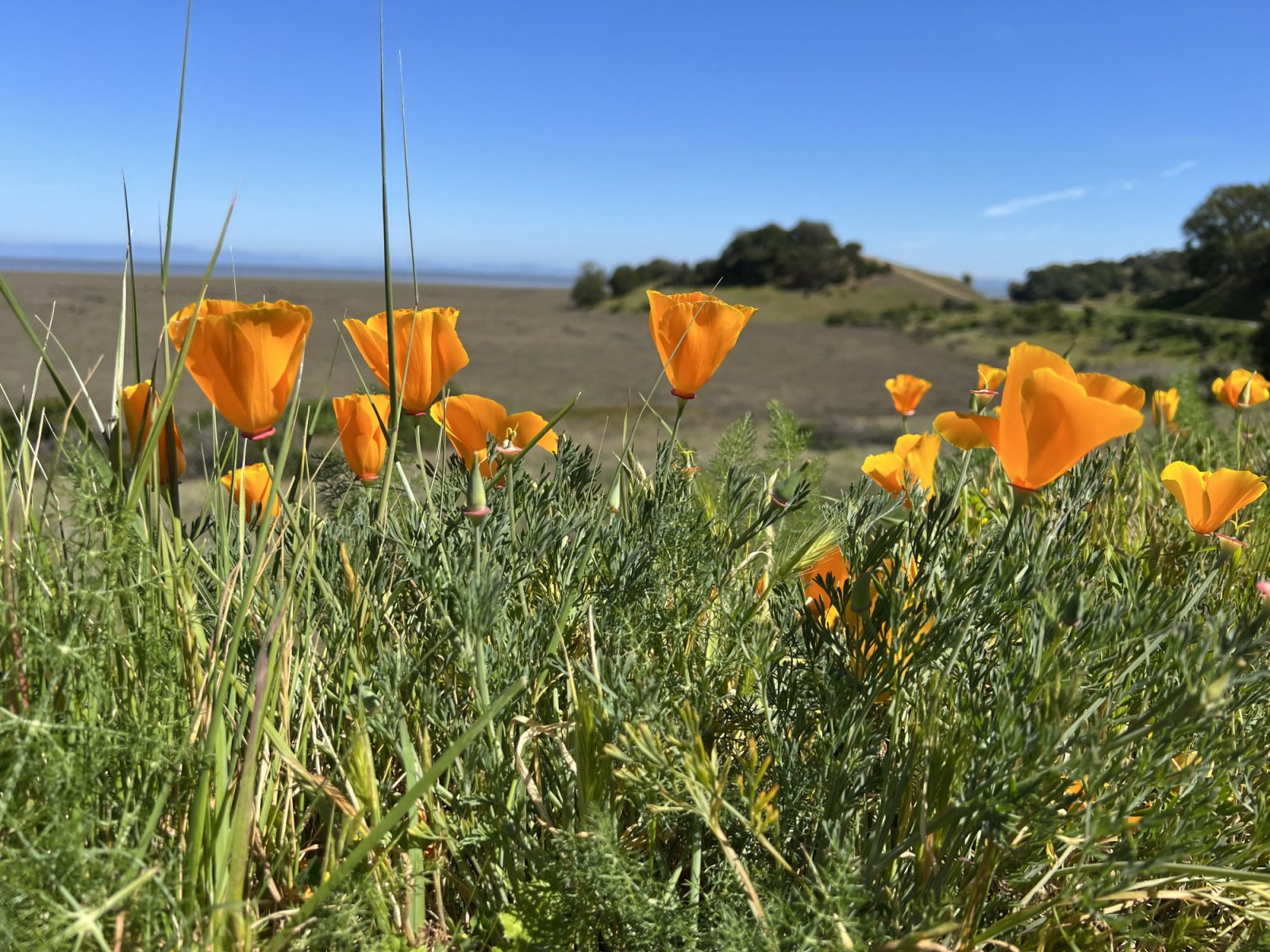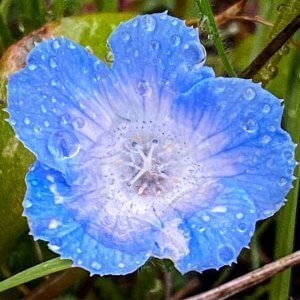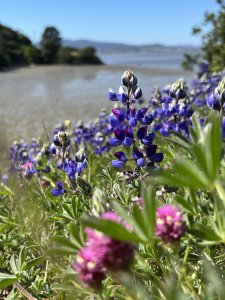
Catching the wildflower show at China Camp
Find out where and when to find colorful blooms throughout the park
Creamy milkmaids, splashy poppies, sprinklings of white stars on wild cucumber vines—these and other wildflowers brighten the meadows and forests throughout China Camp, especially in spring. Wildflowers first start popping up in the park in winter, but different species keep the show going well into summer.

Some wildflowers, like the sunflower-like bloom of coast mule ears, are easy-to-spot scene stealers. Others, such as the tiny, sapphire-blue blossoms nodding at the tips of tall stalks of hound’s tongue, can take a little more sleuthing to discover. The park’s array of habitats—sunny meadows, deep forests, and lush wetlands—allow for diverse flowering plants, and the savvy visitor has a great chance of spying a wide array of blossoms.
Not surprisingly, springtime puts on the best show, with visitors often able to discover baby blue eyes (shown above), California poppy, blue-eyed grass, shooting star, buttercup, sun cup, blue dick, harvest brodiaea, star lily, Douglas and ground iris, California honeysuckle, checker mallow, royal larkspur, and lupine (shown below).
As temperatures rise into summer, new blooms brighten the park. Some of the most noticeable are the bright orange blossoms of sticky monkey flower, a gangly shrub that dots China Camp’s sunny slopes and meadows.
Color-pop all over the park

Summer also brings the beautiful, speckled yellow bells of Mariposa lily, crowns of sky-blue Ithuriel’s spear, and jaunty orange-red spires of Indian paintbrush. The salt marshes also come into bloom at this time of year, with gumplant, alkali heath, and jaumea adding color to shoreline areas.
While you don’t need to know plant names to enjoy wildflowers, it can be fun to learn about individual species, and keep a life list of what you discover and where you found it. To help you get started, FOCC has an online photo gallery of commonly seen wildflowers. The Marin Chapter of the California Native Plant Society also has helpful online tools, including a wildflower gallery and handy “flower sheets” that you print out and take with you on your hikes (a plus if you’re visiting areas with spotty cell reception). The chapter also offers guided field trips; check the chapter calendar for details.
Other sources include the California Academy of Science’s California Wildflowers site created by the California Academy of Sciences, and UC Berkeley’s plant database (very extensive and best if you have some base knowledge of our region’s plants).
Remember: All plants in China Camp State Park are protected, so please enjoy the wildflowers, but take only pictures and memories. Please don’t pick!—reported by FOCC volunteer Harriot Manley

